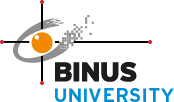COMPUTER NETWORKS (4 SCU)
Learning Outcomes:
Upon successful completion of this course, students are expected to be able to: Identify network equipments, and describe their function and parameters; Calculate network parameters to achieve a given requirement; Identify and apply appropriate network components to solve a given design; Implement a small network with the correct configuration.
Topics:
This course introduces the architecture, structure, functions, components, and models of the Internet and other computer networks. It uses the OSI and TCP layered models to examine the nature and roles of protocols and services at the application, network, data link, and physical layers. The principles and structure of IP addressing and the fundamentals of Ethernet concepts, media, and operations are introduced to provide a foundation for the curriculum. Labs use a “model Internet” to allow students to analyze real data without affecting production networks. Packet Tracer (PT) activities help students analyze protocol and network operation and build small networks in a simulated environment. At the end of the course, students build simple LAN topologies by applying basic principles of cabling; performing basic configurations of network devices, including routers and switches; and implementing IP addressing schemes.
Pre-requisite: None
Published at :



SOCIAL MEDIA
Let’s relentlessly connected and get caught up each other.
Looking for tweets ...